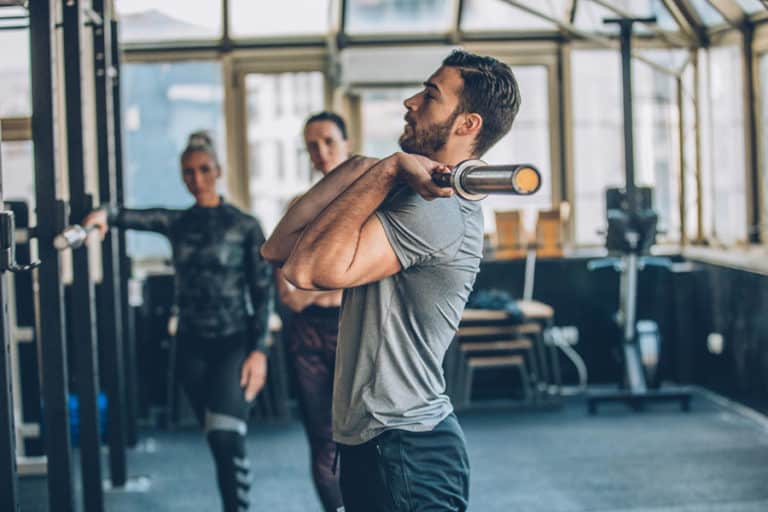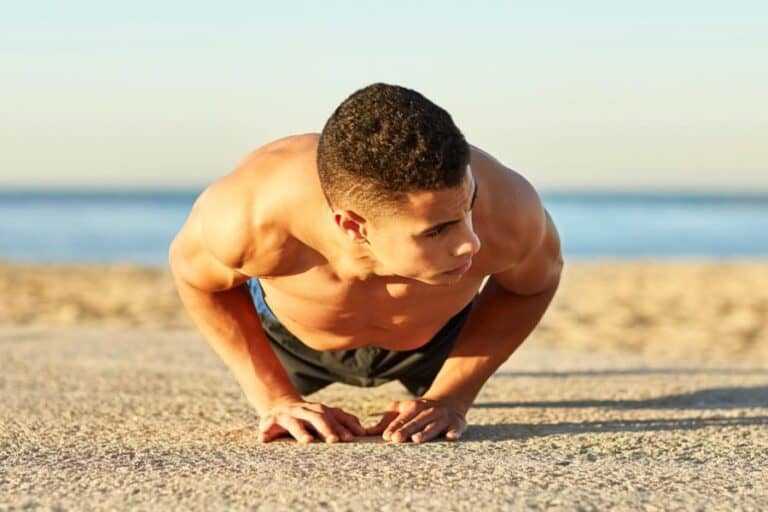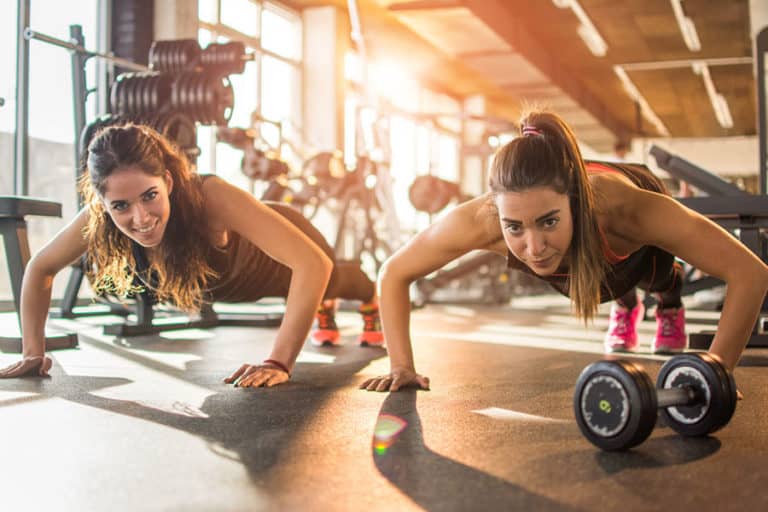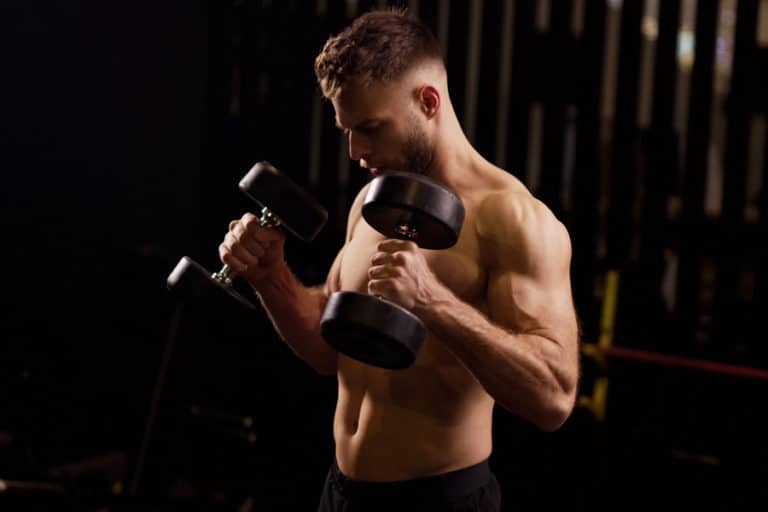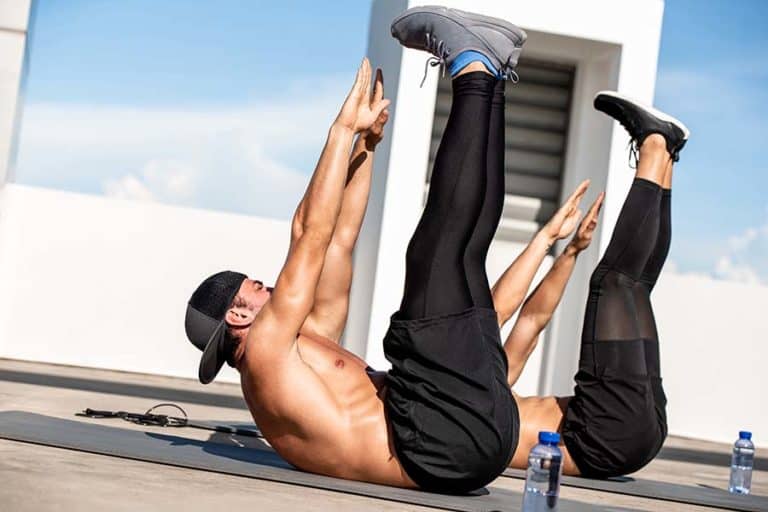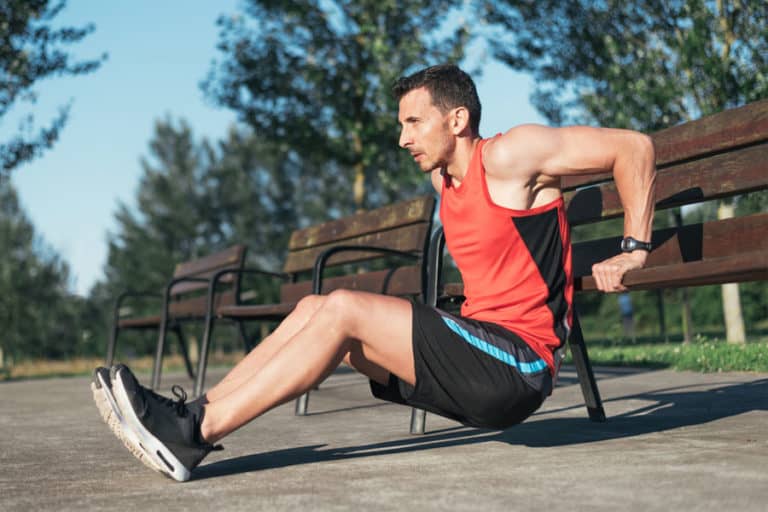11 Best Back And Shoulder Workout For Upper Body Strength
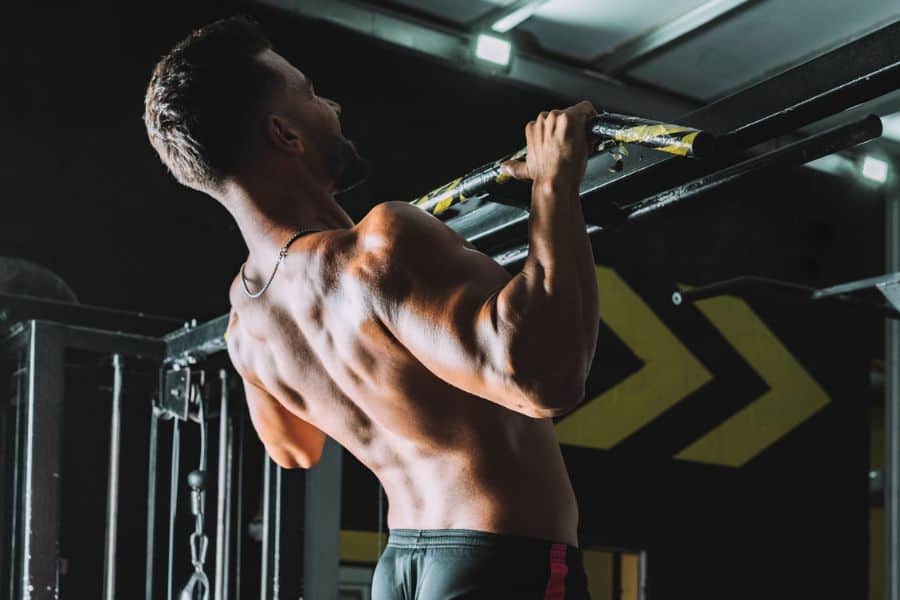
Benefits | Exercises For The Back | Shoulder Workouts | 1 Week Sample Plan | Tips
The back and shoulder muscles play a vital role in maintaining proper posture, stability, and overall upper body strength. A well-rounded workout targeting these areas can enhance performance in daily activities and sports while reducing the risk of injury.
Combining back and shoulder training is an effective way to develop both muscle groups simultaneously. This article aims to provide a list of workouts to help build a robust back and create broad, powerful shoulder muscles.
Why train back and shoulder muscles together?
Training back and shoulder muscles together offers several benefits.
Firstly, both muscle groups are closely related and share overlapping functions. Many back exercises, such as rows and pull-ups, also engage the shoulders.
By combining these muscle groups in a workout, you can optimize your training time and efficiency.
Additionally, working the back and shoulders together helps promote balanced muscle development, improve posture [1]National Library of Medicine: Anatomy, Back and symmetry in the upper body.
Lastly, training these muscles together can enhance overall upper body strength and power, benefiting activities like lifting, pushing, and pulling.
Exercises for the back and shoulders: Building up the upper body
The strength of the back and shoulder muscles [2]National Library of Medicine: Anatomy, Shoulder and Upper Limb, Shoulder depends heavily on every workout for performance. Building these muscles takes a lot of effort and patience.
There are some of the best back workouts for women and men alike. Below we have listed those 8 back day workouts for building a stronger back.
1. Chin-ups
Target muscles: Latissimus dorsi muscles of the back, the biceps, the posterior deltoids of the shoulders, and the teres major.
How to do a chin-up:
- Find a chin-up bar, then place your hands on it with the palms facing your body (supinated grip).
- Lift your body until the chin is above the bar.
- Lower yourself until your arms are straight using a slow, controlled motion.
- Repeat for the desired number of sets and reps.
Summary: The chin-up is a bodyweight training exercise that primarily targets the latissimus dorsi muscles in the upper back. It’s very similar to a pull-up, but with the palms facing the body instead of facing forward.
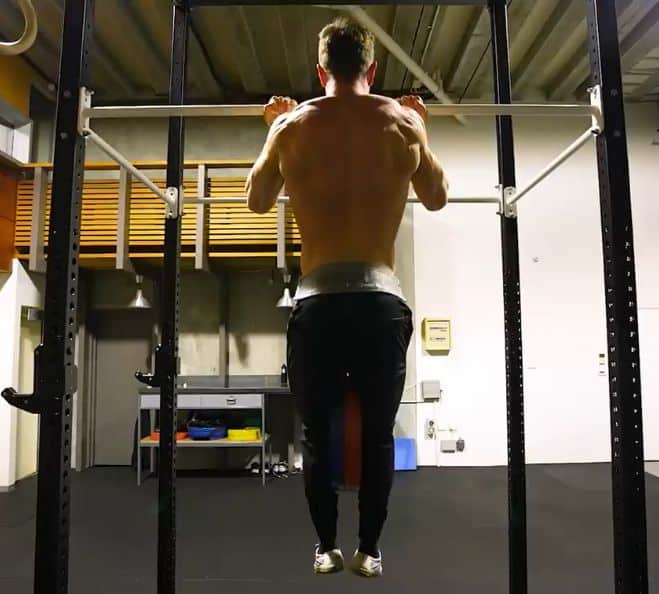
2. Pull-Ups
Target muscles: Lats deltoids, rhomboids, and core
How to do a pull-up:
- Place your hands on the pull-up bar slightly further than shoulder-width apart with palms facing away from your body (overhand/pronated grip).
- Then, slowly raise your feet off the floor while pulling your belly button in toward your spine to activate your core muscles.
- Bend your elbows as you raise your upper body toward the bar until your chin is over the bar.
- Return back to the starting position.
Summary: Pullups are a great way to build upper body strength. Since it engages the muscles in your back, biceps, and the upper arms, it is also known as one of the best back and bicep workout. Avoid swinging your legs around or shrugging your shoulders up while performing this exercise.
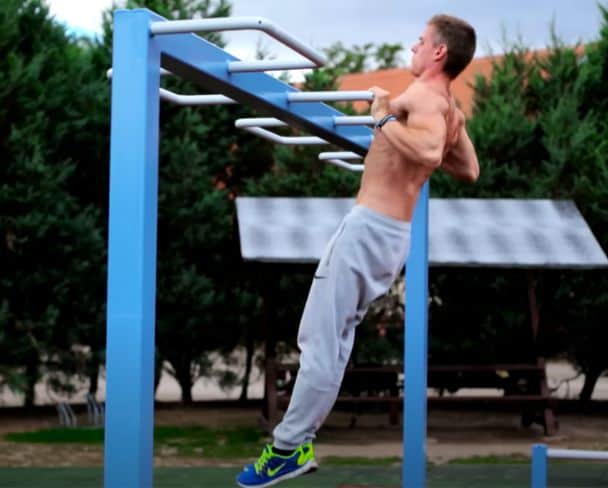
3. Lat pull-downs
Target muscles: Pectoralis major, lower and middle trapezius, brachialis, brachioradialis, teres major, rhomboids, biceps brachii, infraspinatus
How to do lat pull-downs:
- Sit down comfortably on the pull-down seat with your feet flat on the ground.
- Take hold of the bar with a wide overhand grip.
- Now, pull the bar down until it’s leveled with your chin just above your shoulder height.
- Engage your core muscles and keep your spine straight as you pull the bar.
- Then, gently squeeze your shoulder blades together and return the bar to the starting position.
Summary: Lat pull-downs can help to improve upper body strength and posture, and can be modified with different grip widths and hand positions to target different muscle groups.
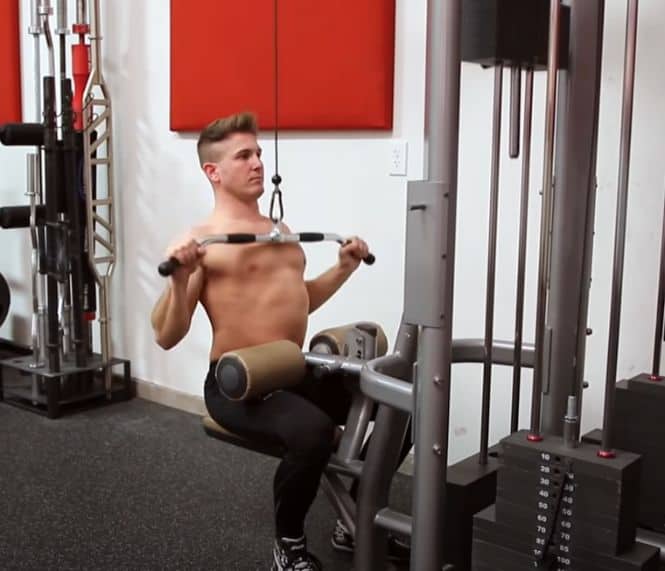
4. Dumbbell shrugs
Target muscles: Trapezius muscles
How to do dumbbell shrugs:
- Hold the dumbbells on your sides with your palms facing inwards.
- Ensure to keep your feet hip width apart.
- Now, try raising your shoulders by shrugging as high as possible.
- Keep your chin up straight and engage your core muscles.
- Lower your shoulder back into the start position and then repeat.
Summary: The dumbbell shrug is an effective dumbbell back workout for building traps, as it puts maximum tension on the muscle at the top of the movement. Moreover, this exercise doesn’t need a lot of weight to provide the muscles a good workout.

5. Barbell Bent Over Rows
Target muscles: Latissimus dorsi, the middle and lower trapezius, the rhomboids, and the posterior deltoids
How to do barbell bent over rows:
- Hold a barbell, bend at the knees and hinge your hips, bending forward until your body is parallel to the ground.
- Ensure to keep your core muscles tight and your back straight.
- Pull the barbell up to your chest, lower, and then repeat.
Summary: Barbell bent over rows train your upper arms as well as your back and shoulder muscles. These can help to improve upper body strength, posture, and back definition.
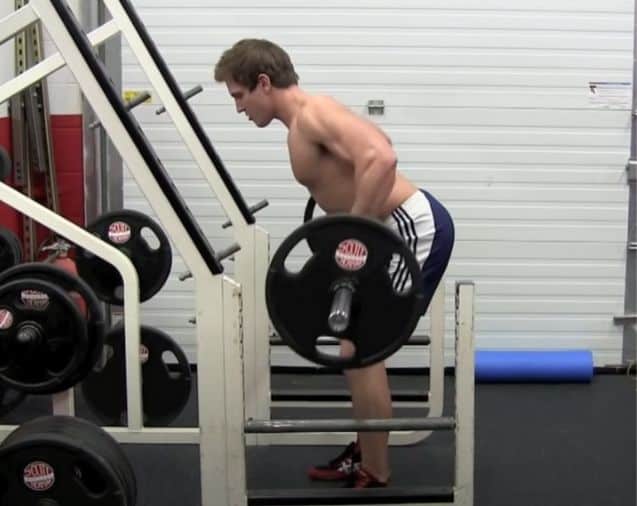
6. Deadlifts
Target muscles: Hamstrings, glutes, back, hips, core, trapezius
How to do deadlifts:
- Stand behind a barbell with your feet about shoulder-width apart.
- Hinge at your hips, bend slightly at your knees and keep your back flat.
- Now, grab the barbell with palms facing your body. Ensure your hands are also shoulder width apart.
- Pull the bar by keeping your neck neutral to your spine. Do not look up or down.
- Squeeze your butts and engage your core muscles when you stand up. Ensure to keep the bar close to your body.
- Now, return to the squat position and stand up again.
Summary: Deadlifts are great for the back and shoulder, but this workout also works to help you gain definition in your glutes and hamstrings. This exercise is one of the three powerlifting exercises.
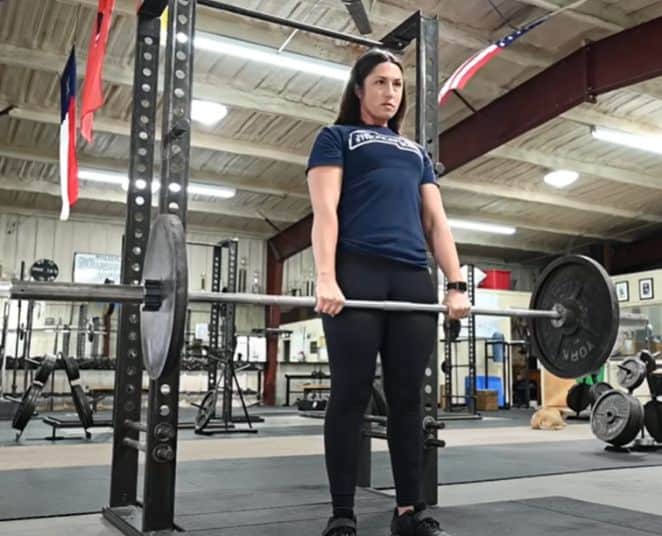
7. Back extensions
Target muscles: Posterior chain muscle group, erector spinae muscles, quadratus lumborum
How to do back extensions:
- Step on a hyperextension machine and secure your ankles on the footpad.
- Adjust the upper pad so your thighs can have some space to bend without any waist restriction.
- Keep your body straight on the machine and cross your arms or you can also keep your hands behind your head.
- Now slowly start bending forward as far as you can. Keep moving until you feel a nice stretch in your hamstrings.
- Return to the starting position and repeat.
Summary: Back extensions are an isolation exercise that primarily works on your lower back. It is a type of stabilization workout that improves your posture. This workout also activates the glutes and hamstrings of muscle groups.
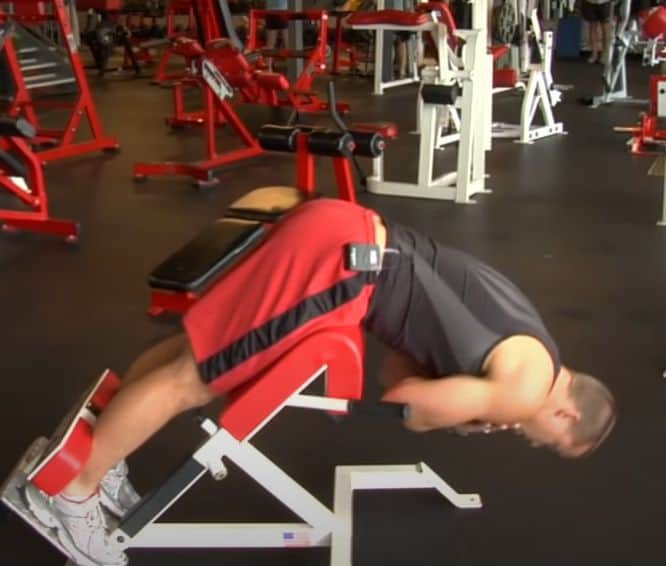
8. Seated cable rows
Target muscles: Latissimus dorsi, rhomboids, trapezius, biceps brachii
How to do seated cable rows:
- Adjust the seat and the pulley on the cable machine so that the handle is at waist height. You may also want to attach a straight or bent bar to the cable for a different grip.
- Sit on the seat with your feet flat on the ground and grab the handle with an overhand grip (palms facing down).
- Keep your chest up, shoulders back, and abs engaged throughout the exercise.
- Pull the handle towards your body, squeezing your shoulder blades together. Keep your elbows close to your sides as you do this.
- Return the handle to its starting position and repeat. Keep your back straight and your chest out as you row.
Summary: Seated cable rows target the middle back muscles, as well as your biceps and forearms. The seated cable row also engages the core muscles, enabling you to stabilize your body as you perform the exercise.
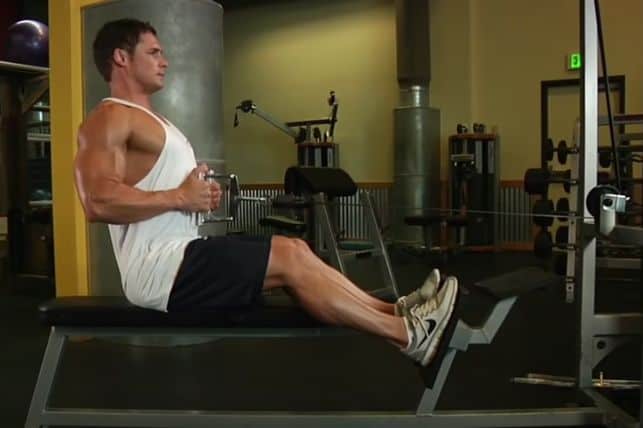
At home or Gym Shoulder Workouts
Below listed are some of the best and most effective shoulder workouts that can be performed at home or at gym:
1. Dumbbell Lateral Raise
Target muscles: Lateral deltoid muscles
How to do dumbbell lateral raise:
- Stand with your feet shoulder-width apart. Hold a dumbbell in each hand at your sides, palms facing in, towards your body.
- Lift the dumbbells out to the sides until they are level with your shoulders. Maintain a slight bend at your elbows as you do so.
- Hold this position for a moment, then slowly lower the dumbbells back down to the starting position.
- Repeat for the desired number of reps.
Summary: Lateral raises can be done as part of a shoulder or upper body workout. They can be done for high reps to build endurance or lower reps with heavier weights to build strength.
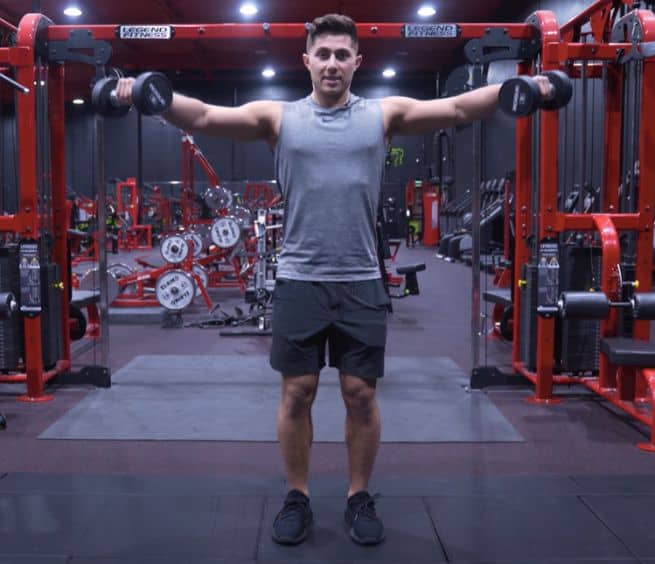
2. Dumbbell Reverse Fly
Target muscles: Posterior deltoids, rear deltoids
How to do a dumbbell reverse fly:
- Hold a dumbbell of your preferred weight in each hand with feet shoulder-width apart. Hinge your hips forward and bend slightly parallel to the ground.
- Let the weights hang straight down, and then raise both arms to your sides until your upper arms are in line with your upper back.
- Squeeze the shoulder blades together as you pull them toward the spine.
- Keep your chin tucked for a neutral position, then lower the weight back and repeat.
Summary: Dumbbell reverse fly, also known as bent-over reverse fly, helps to increase your range of motion and improve the stability of your shoulders. As a result, this exercise can help reduce shoulder pain or discomfort and allow you to perform activities with improved form and technique.
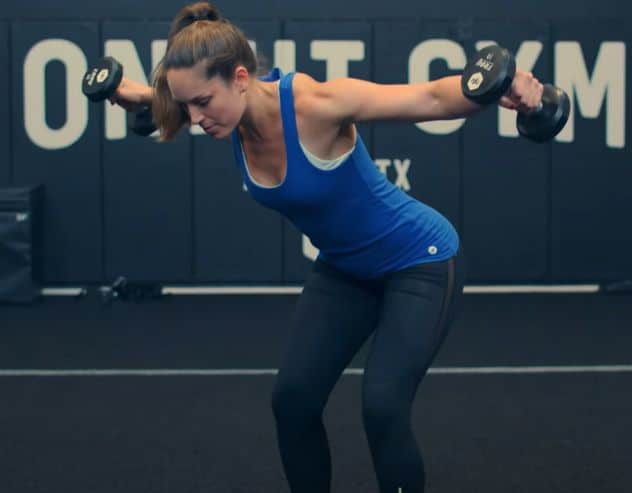
3. Overhead Barbell Press
Target muscles: Pectorals, deltoids, triceps, trapezius
How to do overhead barbell press:
- Stand with your feet shoulder-width apart and hold the barbell with your palms facing each other.
- Engage your core and press the barbell straight up overhead, keeping your elbows close to your body.
- Slowly lower the barbell back down to your shoulders.
- Repeat for the desired number of reps.
Summary: The overhead barbell press, also known as overhead press, is an upper-body weight training exercise in which the trainee presses a weight overhead. It is a great way to test your strength and conditioning. You can use kettlebells or dumbbells in place of the barbell. You can use a pair of dumbbells or kettlebells also instead of a barbell.
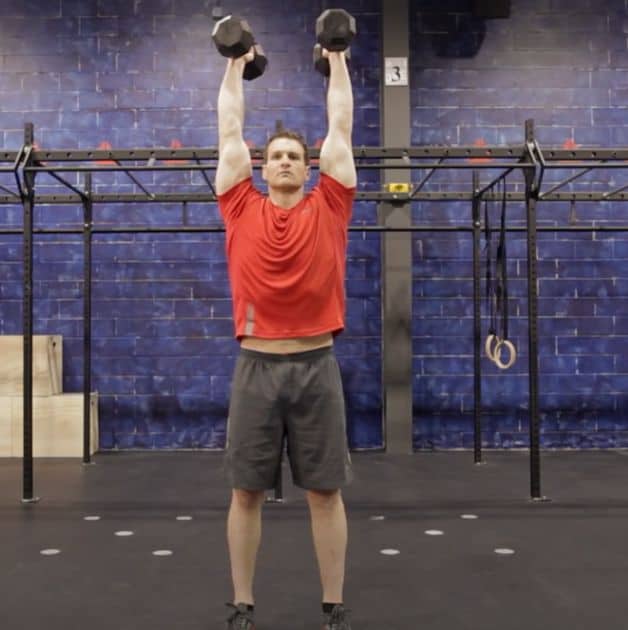
Sample back and shoulder workout plan
We have created a one-week back and shoulders workout plan below to help you incorporate the above exercises into your workout routine.
| Day | Back and Shoulder Workout | Sets | Reps |
| Monday | Pull-Ups Dumbbell Lateral Raise | 2-3 4-6 | 4-6 10-12 |
| Tuesday | Lat Pull-Downs Dumbbell Shrugs Dumbbell Reverse Fly | 4-5 2-4 3-4 | 10-12 5-6 10-15 |
| Wednesday | Barbell Bent Over Rows Deadlifts Overhead Barbell Press | 3-5 3-4 3-4 | 6-12 4-5 6-8 |
| Thursday | Back Extensions Seated Cable Rows Dumbbell Reverse Fly | 3-4 2-3 3-5 | 10-15 3-5 10-15 |
| Friday | Chin-Ups Dumbbell Lateral Raise | 2-3 3-4 | 4-6 10-12 |
| Saturday | Rest | Rest | Rest |
| Sunday | Rest | Rest | Rest |
Tips to keep in mind while working out your back and shoulders
The most essential things to keep in mind while working out your back and shoulders are:
1. Use of proper form
Proper form can help you build better posture and strengthen your spine. A bad form can injure your back or shoulders, leading to spine injury or a dislocated shoulder.
2. Always warm up before starting an exercise routine
Warming up will increase blood flow to your muscles and allow them to relax. The muscles also become more flexible and pliant during workout sessions, so they can better respond to the stimulus of the exercises.
3. Duration of your back and shoulder workout
The duration depends on the type of equipment you use and the intensity of your workout.
If you are doing supersets, training for a shorter period is best. In case of longer workout sessions, isolated exercises work best instead of compound exercises.
4. Capacity
To ensure that your muscles recover, keep the intensity level of your back and shoulder exercises within the body’s capacity.
Conclusion
Your back and shoulders are two of the most important muscle groups in your body, responsible for maintaining good posture, stability, and mobility. Whether you’re an athlete, fitness enthusiast, or just looking to improve your overall health and wellness, working on these muscle groups is essential.
References
| ↑1 | National Library of Medicine: Anatomy, Back |
|---|---|
| ↑2 | National Library of Medicine: Anatomy, Shoulder and Upper Limb, Shoulder |


